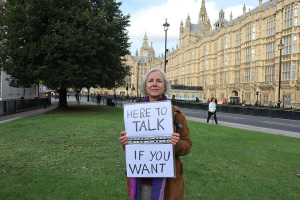Schools Cutting Homework Time for Students
School districts across the country are either approving or considering policies that cut down homework time for students to as little as 10 minutes per day and even none at all on weekends and holidays.
A push for less homework has been fueled, at least partially, by documentaries such as “Race to Nowhere” and “Waiting for Superman.” The films address the issues of stressed students, teachers, and school systems with overloaded tasks and high achievement goals rarely attained.
In New Jersey, school board members of the Galloway school district, which serves 3,500 kindergarten through eighth-grade students, will vote this summer on a proposal to limit weeknight homework to 10 minutes for each year of school – 20 minutes for second graders, and so forth – and ban assignments on weekends, holidays and school vacations, according to The New York Times.
Officials in the Pleasanton School District, north of San Jose, Calif., are looking at cutting homework times by nearly half and prohibit weekend assignments in elementary grades because, as one administrator said, “parents want their kids back,” the Times reports.
Teachers at Mango Elementary School in Fontana, Calif., are replacing homework with “goal work” that is specific to individual student’s needs and that can be completed in class or at home at his or her own pace. In the Capistrano Unified School District in Orange County, the district already has plans to pilot a limited homework schedule at three of its schools.
Some private schools may already be ahead of the game when it comes to assigning less homework. Sherry Siu, who teaches at Grace Academy School in Laguna Niguel said her school has a set standard per night per age group.
“Homework is never anything new, but reinforces what was learned in class, and should never be 'busywork,'” she said. “It’s important to note that homework should not take up 'family' time.
After a run at theaters, “Race to Nowhere” is currently showing at screenings at schools and for community groups. The film features stories of young people who have been “pushed to the brink, educators who are burned out and worried that students aren’t developing the skills they need, and parents who are trying to do what’s best for their kids.”
The storyline described on the film’s website states that “‘Race to Nowhere’ points to the silent epidemic in our schools: cheating has become commonplace, students have become disengaged, stress-related illness, depression and burnout are rampant, and young people arrive at college and the workplace unprepared and uninspired.”





























